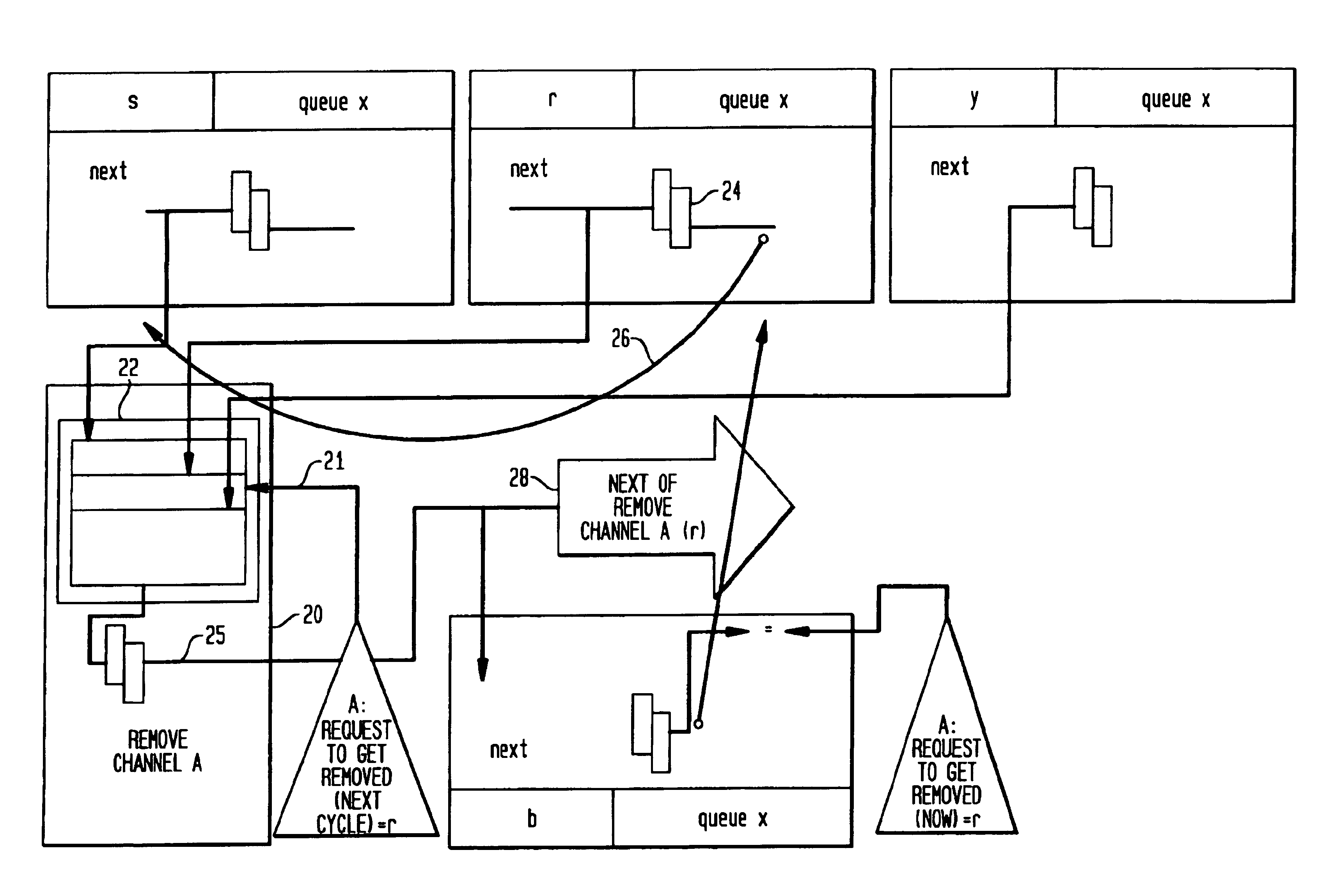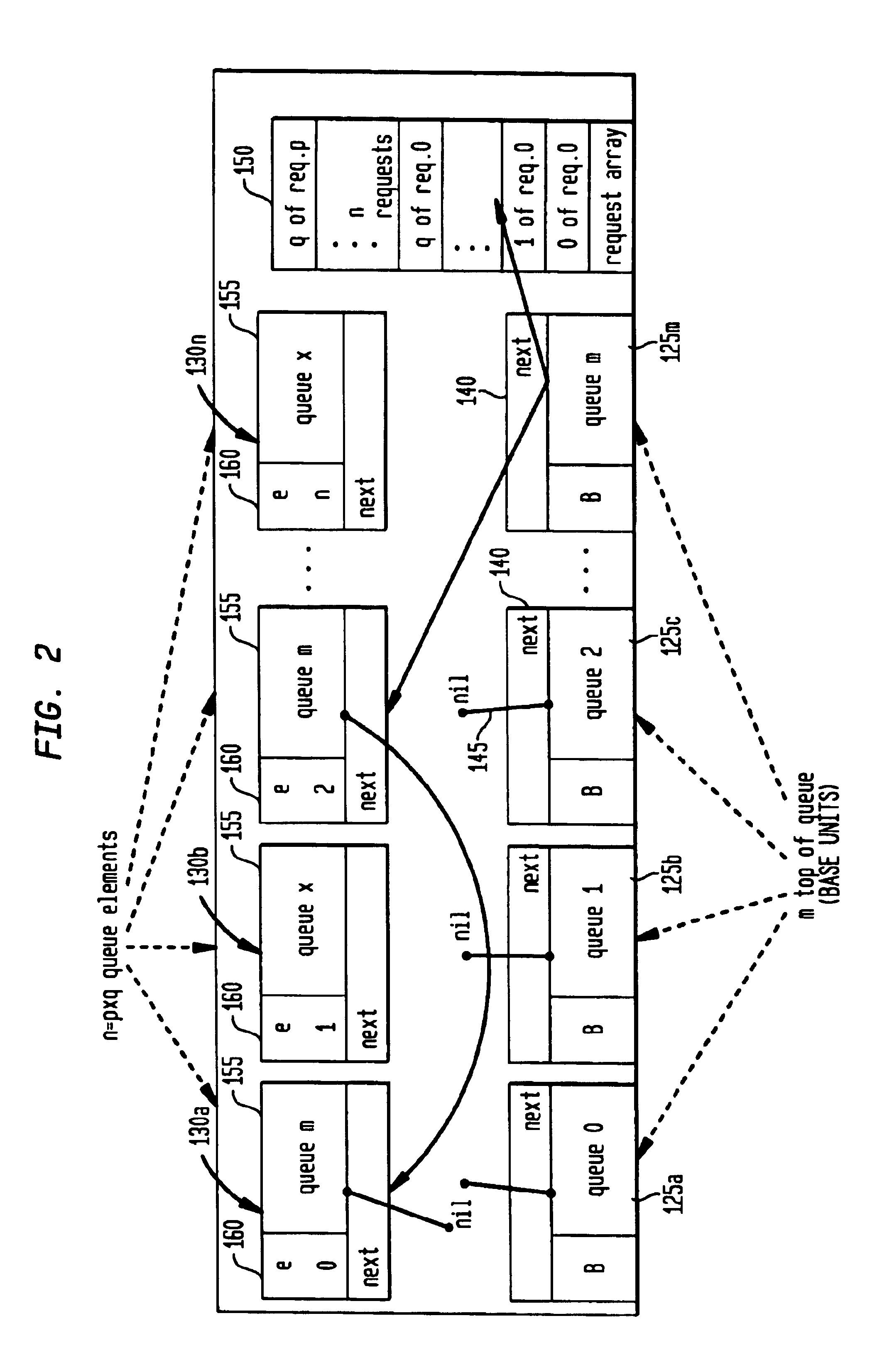System for building electronic queue(s) utilizing self organizing units in parallel to permit concurrent queue add and remove operations
- Summary
- Abstract
- Description
- Claims
- Application Information
AI Technical Summary
Benefits of technology
Problems solved by technology
Method used
Image
Examples
Embodiment Construction
In most cases the maximum number of outstanding requests per requester o at a given time is limited, such that the total number of request at a given time is n=o.times.p.
The basic idea comprised of the present invention is to provide a hardware implementation of such a queue management system on a chip.
According to an advantageous feature of the present invention such a queue management system can be realized by a plurality of primitive queue elements consisting each basically of a register for a next-pointer and a register for a queue number. The next-pointer values of the queue elements are available to each queue element as an input via a multiplexer and through a register.
Such queue elements are associated with an entry in a central array in which the data belonging to the actual requests are stored. This separation is advantageous as said data amounts are quite large compared to the small amount of data being required for the pure logic of the queue management system.
In said ha...
PUM
 Login to View More
Login to View More Abstract
Description
Claims
Application Information
 Login to View More
Login to View More - R&D
- Intellectual Property
- Life Sciences
- Materials
- Tech Scout
- Unparalleled Data Quality
- Higher Quality Content
- 60% Fewer Hallucinations
Browse by: Latest US Patents, China's latest patents, Technical Efficacy Thesaurus, Application Domain, Technology Topic, Popular Technical Reports.
© 2025 PatSnap. All rights reserved.Legal|Privacy policy|Modern Slavery Act Transparency Statement|Sitemap|About US| Contact US: help@patsnap.com



